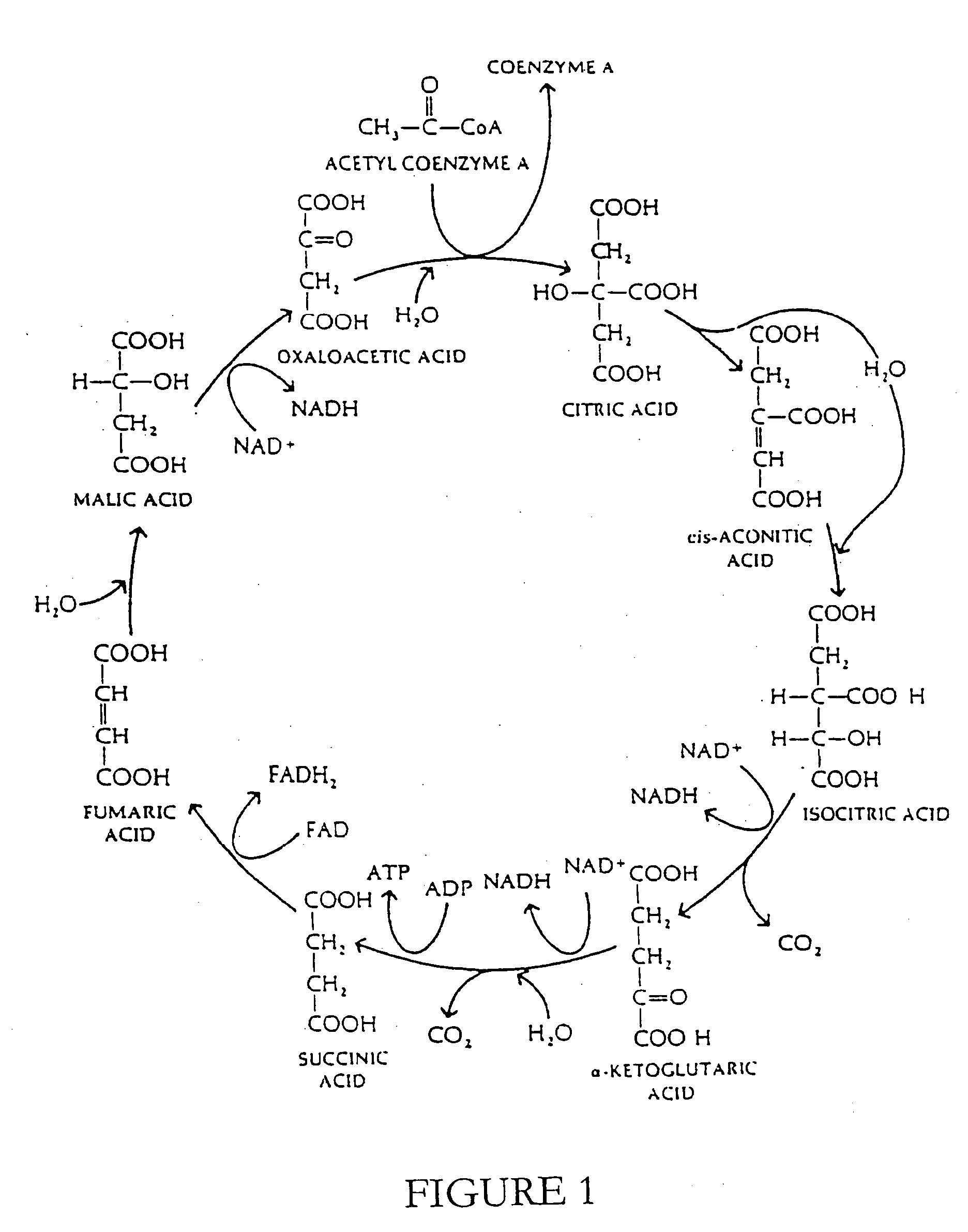Pharmaceutical compositions for metabolic insufficiencies
- Summary
- Abstract
- Description
- Claims
- Application Information
AI Technical Summary
Benefits of technology
Problems solved by technology
Method used
Image
Examples
example 1
Fudge
[0071] Components: [0072] unsweetened chocolate (30 gms) [0073] flax seed oil (20 gm, i.e. 2 tablespoons) [0074] glucose (50 gm) [0075] calcium malate (13.4 gm) [0076] green tea powder, from uncooked green tea leaves (4.7 gm; 1 teaspoon) [0077] resveratrol (20 mg)
[0078] Formulation:
[0079] Melt chocolate and mix with flax seed oil. Stir in glucose, then calcium malate, then reserveratrol, then green tea powder. The mixture should be soft when formed. Then chill in the refrigerator (4° C.) until firm. This preparation retains the firm consistency of a normal bar of chocolate at room temperature, but it is routinely stored at refrigerator temperature.
[0080] The fudge of Example 1 can be used as an adjunct (i.e., part of the regimen) for treatment of degenerative diseases of the nervous system (including but not limited to Alzheimer's Disease, Parkinson's Disease, Diffuse Lewy body disease) as well as part of the regimen for the treatment of stroke, ischemic heart disease, and ...
example 2
Fudge
[0081] This preparation is identical to Example 1, except that 3 mg of phenylethylamine is added to the flax oil before it is mixed into the unsweetened chocolate.
[0082] The fudge of Example 2 can be used in the same uses as Example 1, but in individuals who are apathetic or depressed and do not develop headaches, excitement or other significant side effects to the ingestion of phenylethylamine.
example 3
Fudge
[0083] The fudge of Example 3 is identical to the fudge of Example 1, except that it also contains curcumin. The curcumin (100 μg) is added immediately before the resveratrol. Alternatively, the fudge of Example 3 can be prepared in accordance with Example 2, except for also containing curcumin (100 μg) which can be added immediately before the reserveratrol.
[0084] The fudge of Example 3 can be used as an adjuvant to treatment of individuals with malignancies (i.e., cancers), or in the attempted prevention of the development of recurrent or other cancers.
PUM
| Property | Measurement | Unit |
|---|---|---|
| Composition | aaaaa | aaaaa |
| Solubility (mass) | aaaaa | aaaaa |
| Ratio | aaaaa | aaaaa |
Abstract
Description
Claims
Application Information
 Login to View More
Login to View More - R&D
- Intellectual Property
- Life Sciences
- Materials
- Tech Scout
- Unparalleled Data Quality
- Higher Quality Content
- 60% Fewer Hallucinations
Browse by: Latest US Patents, China's latest patents, Technical Efficacy Thesaurus, Application Domain, Technology Topic, Popular Technical Reports.
© 2025 PatSnap. All rights reserved.Legal|Privacy policy|Modern Slavery Act Transparency Statement|Sitemap|About US| Contact US: help@patsnap.com

